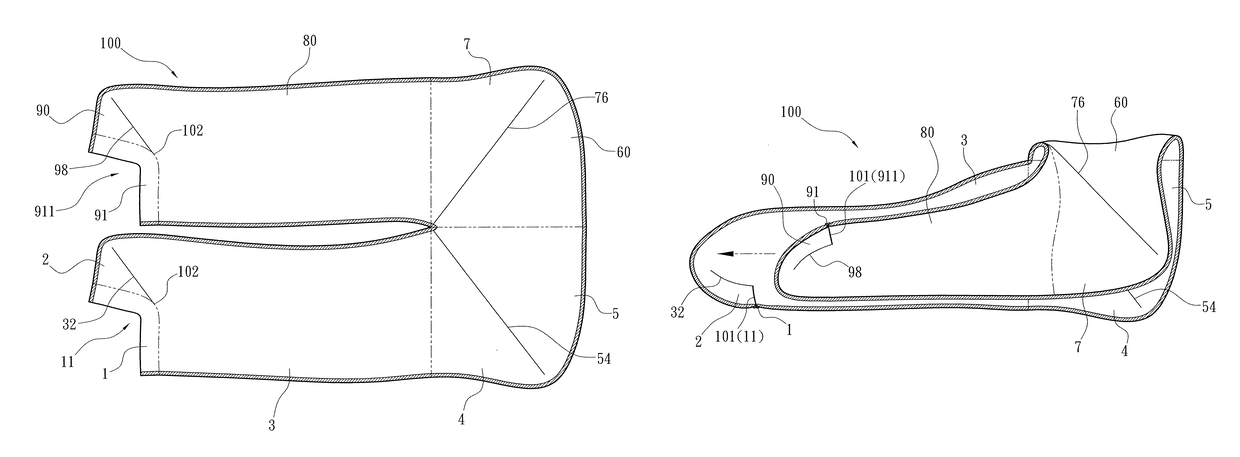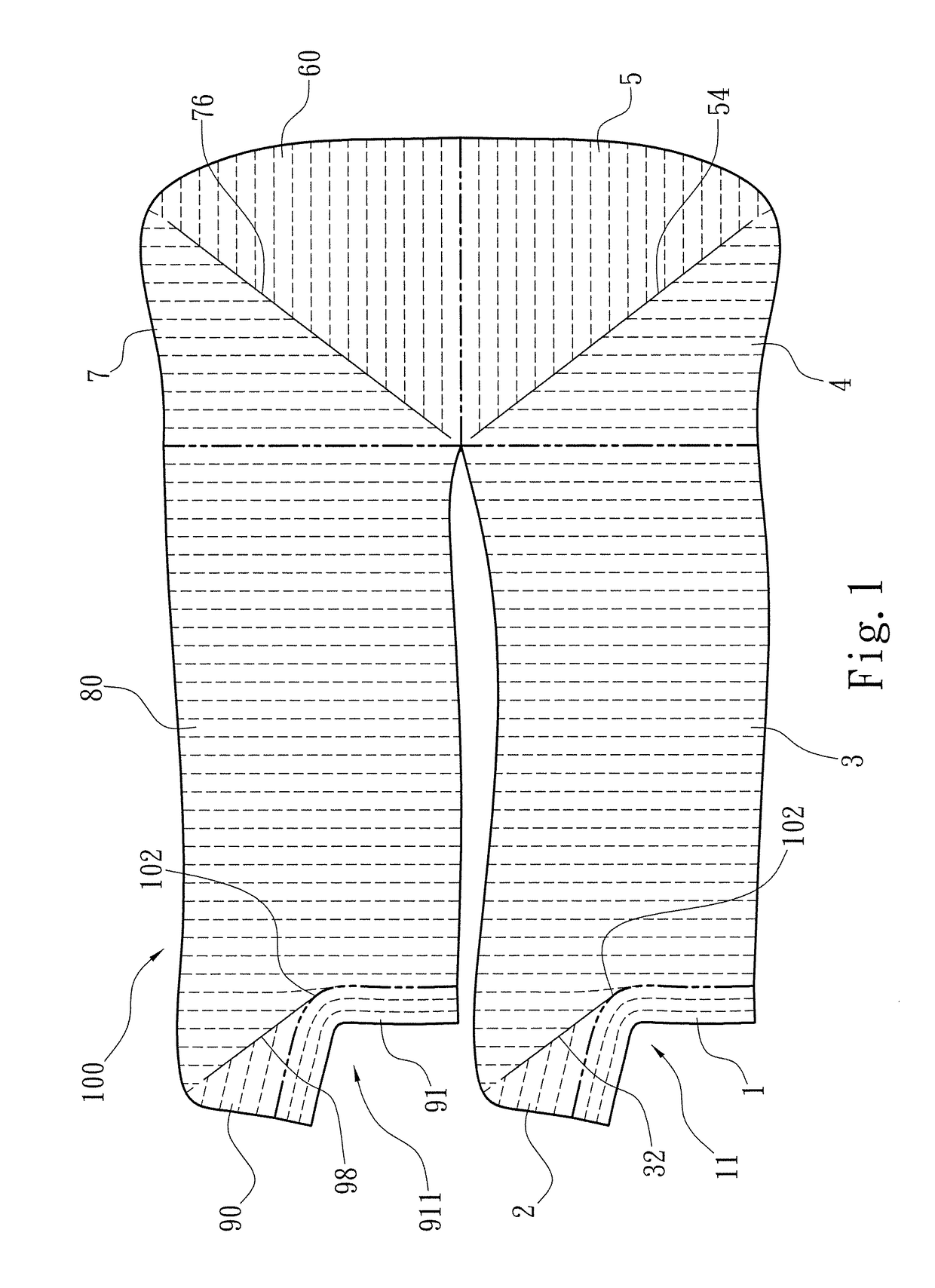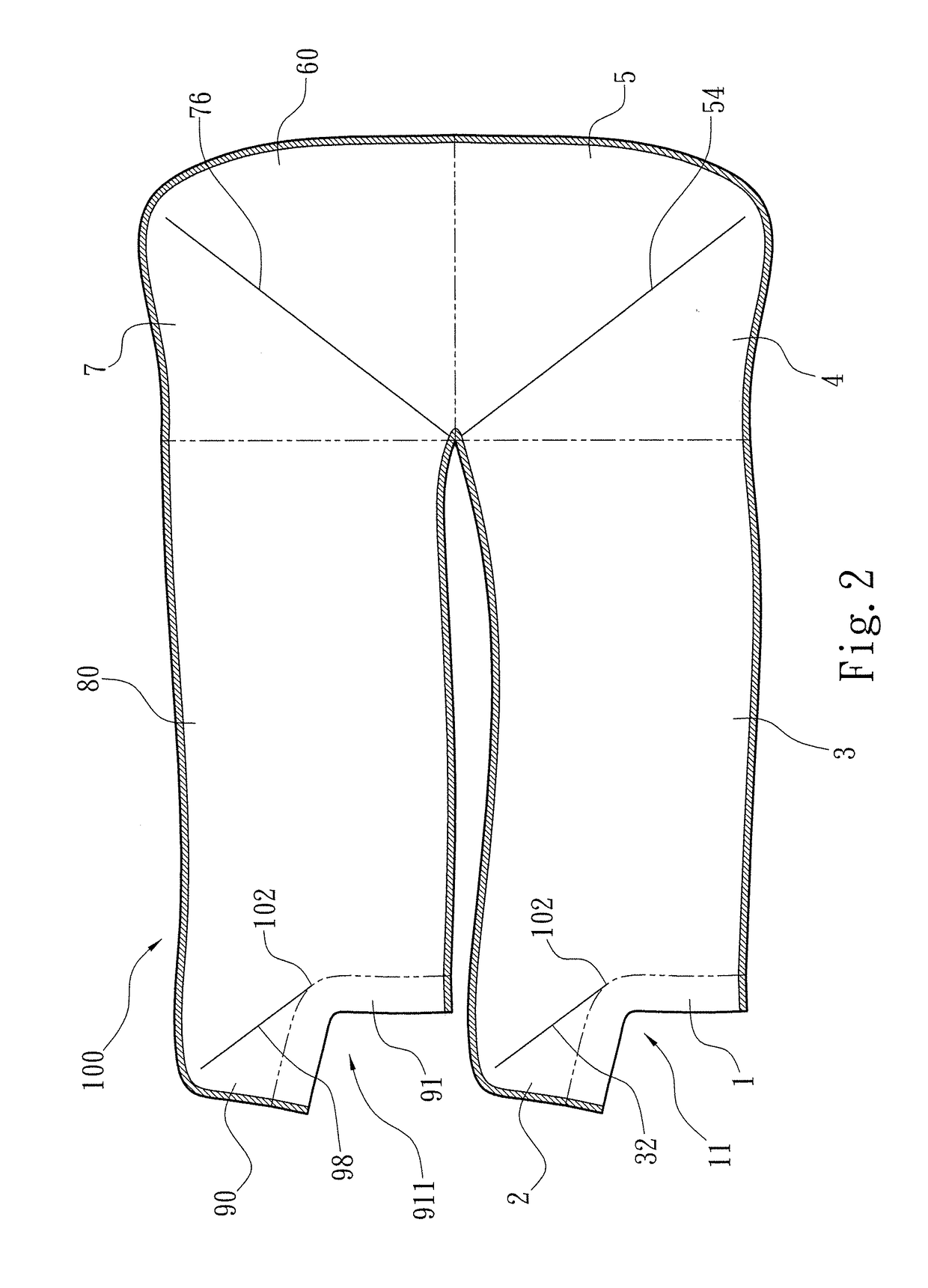Method for knitting integral shoe upper fabric by circular knitting machine and integral shoe upper fabric thereof
a technology of shoe upper fabric and circular knitting machine, which is applied in the field of shoe upper fabric, can solve the problems of excessive shoe object trimming, increased production costs, and inability of factories to reduce production costs, and achieves the effects of enhancing wear resistance, reducing production costs, and reducing production costs
- Summary
- Abstract
- Description
- Claims
- Application Information
AI Technical Summary
Benefits of technology
Problems solved by technology
Method used
Image
Examples
Embodiment Construction
[0044]The present invention provides a method for knitting an integral shoe upper fabric by a circular knitting machine and an integral shoe upper fabric thereof. Details of preferred embodiments and technical contents of the present invention are given with the accompanying drawings below. Refer to FIG. 1 to FIG. 6 showing a planar appearance diagram and a section view according to a first preferred embodiment of the present invention, continuous operation diagrams before the first preferred embodiment is processed to a shaped shoe upper, and a section view of the first preferred embodiment having been processed to a shaped shoe upper. It is clearly seen from the diagrams that, the present invention provides an integral shoe upper fabric knitted by a circular knitting machine. The integral shoe upper fabric 100 is knitted from at least one non-elastic yarn provided to the circular knitting machine, and includes: a first reserved suture section 1 knitted by the circular knitting mac...
PUM
 Login to View More
Login to View More Abstract
Description
Claims
Application Information
 Login to View More
Login to View More - R&D
- Intellectual Property
- Life Sciences
- Materials
- Tech Scout
- Unparalleled Data Quality
- Higher Quality Content
- 60% Fewer Hallucinations
Browse by: Latest US Patents, China's latest patents, Technical Efficacy Thesaurus, Application Domain, Technology Topic, Popular Technical Reports.
© 2025 PatSnap. All rights reserved.Legal|Privacy policy|Modern Slavery Act Transparency Statement|Sitemap|About US| Contact US: help@patsnap.com



